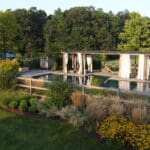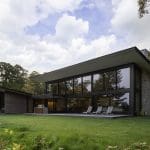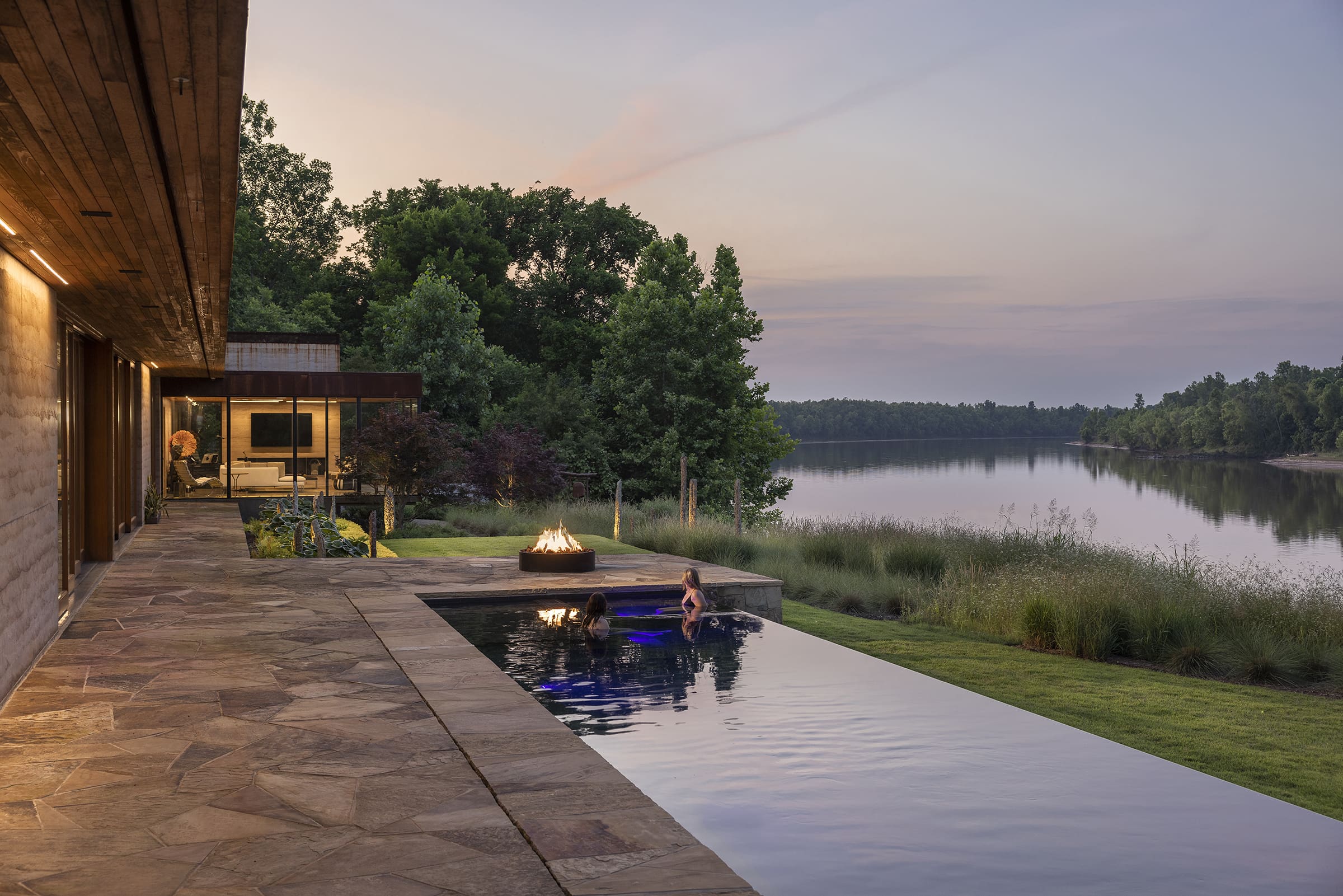
This project earned Landvisions a Gold Award for Residential Design/Build in the 2023 Awards of Excellence.
The banks of the Red River near Shreveport, Louisiana, are not your typical landscape setting, as the river frequently has seasonal flooding that impacts nearby homeowners. This family was looking to create a landscape that would match their home’s contemporary style and maintain the property’s natural ambiance. Landvisions, located in Tyler, Texas, was chosen to design and install this unique landscape.
”The exterior design took 1.5 years and included an intense collaborative process with the owners, Werner Field architecture firm out of Dallas, Hand Construction, the building contractor out of Shreveport, and both civil and structural engineers, so it was quite the complete team of experts all working to provide a very comprehensive design document package for construction,” says David Cordell, the chief executive officer of Landvisions.
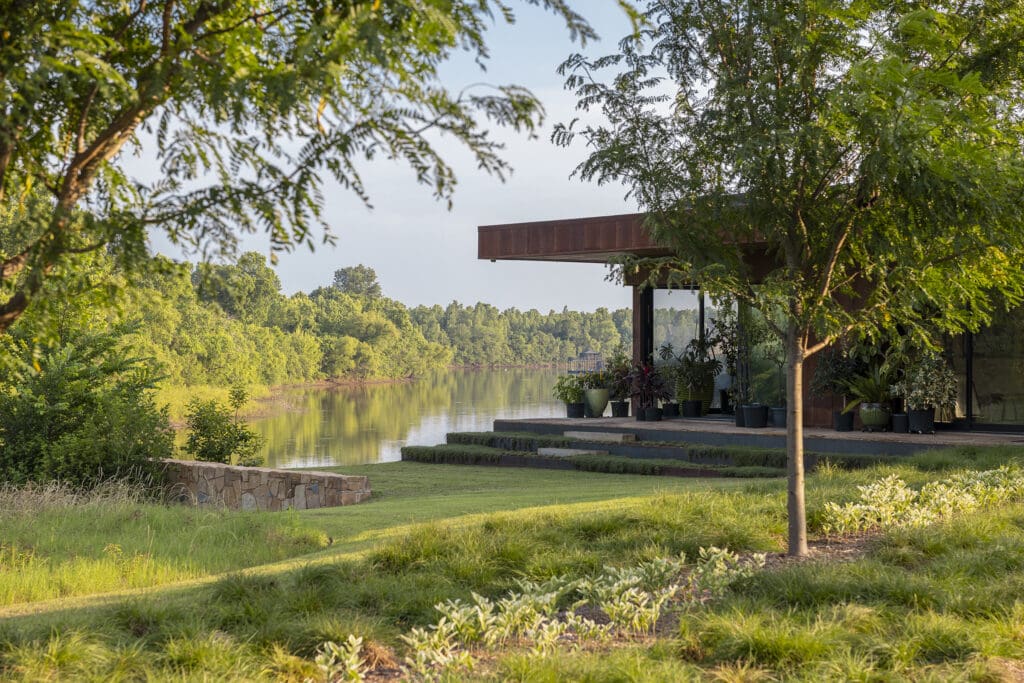
After the design was created, construction began about six months later and took about 1.5 years to complete, resulting in a nearly four-year project from start to finish.
This property consists of several ecosystems, so Landvisions worked with the owner to establish zones to break down the site and determine a strategy for each area. The river zone posed a significant challenge with the seasonal flooding and erosion.
“Our team consulted with native seed specialists to develop a restoration plan for the marginal areas disturbed by construction that would stabilize the river’s edge and withstand intermittent flooding,” Cordell says. “‘Naturalizing’ certain areas of the property and working with existing landforms allowed the team to steadily increase the level of development and maintenance as it moved closer to structures and activity zones. Using a minimalist plant material pallet, we were able to seamlessly merge more manicured spaces surrounding the home with the restored naturalized zones such as the river shoreline and native grass meadows.”
Some of the other zones were also naturalized to enhance the conservation of natives and provide a sense of tranquility to the site.
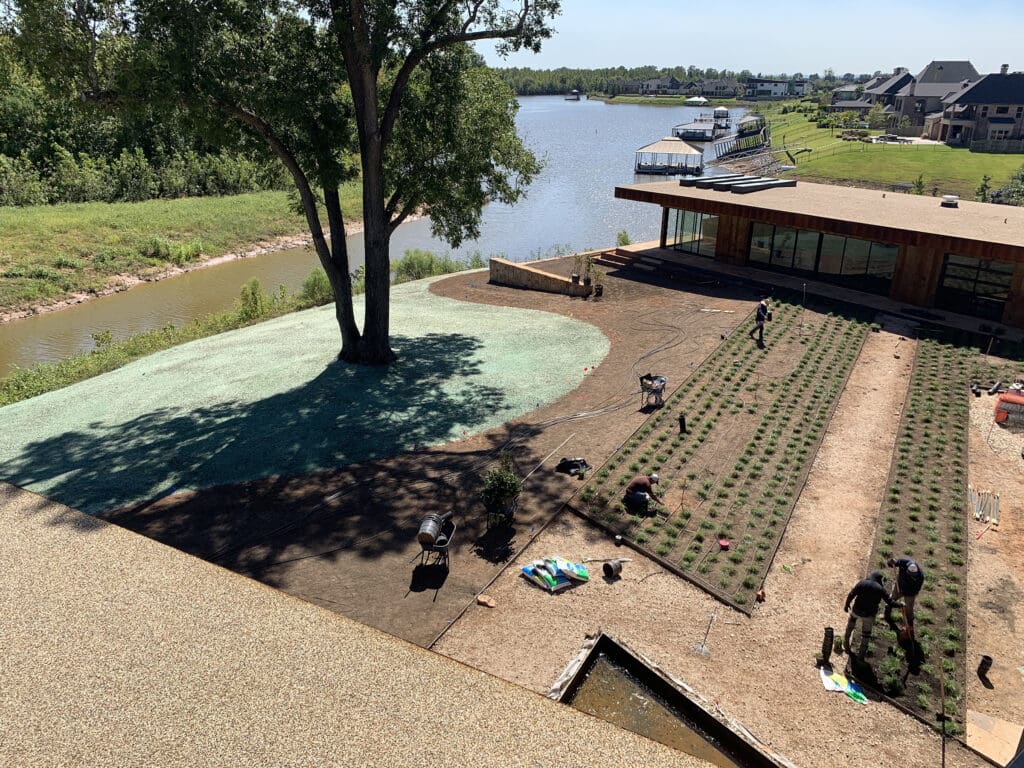
“While these zones provided an excellent opportunity to plant trees and shrubs for future privacy, they also included man-made berms, custom steel screens, fencing, and gates to create a natural sense of departure from the adjacent neighborhood,” Cordell says.
These structures include Corten walls along the driveway that are angled and illuminated as you enter the front courtyard. Along the property’s perimeter, you’ll find a privacy fence and entrance gate on the driveway. Landvisions installed various trees and shrubs in open areas between the front courtyard and the entrance gate to soften the space.
While the riverbank presented challenges, the owners’ expectations were also tricky at times, as they wanted a negative edge pool installed along the back of the house but didn’t want heavy equipment used near the house. Poor soil was also an issue, so every part of the pool had to be custom-engineered. Landvisions used helical piers and a reinforced steel frame for the pool structure, then added 4” plumbing to provide filter circulation and feature pumps set at 230 linear feet to the equipment set.
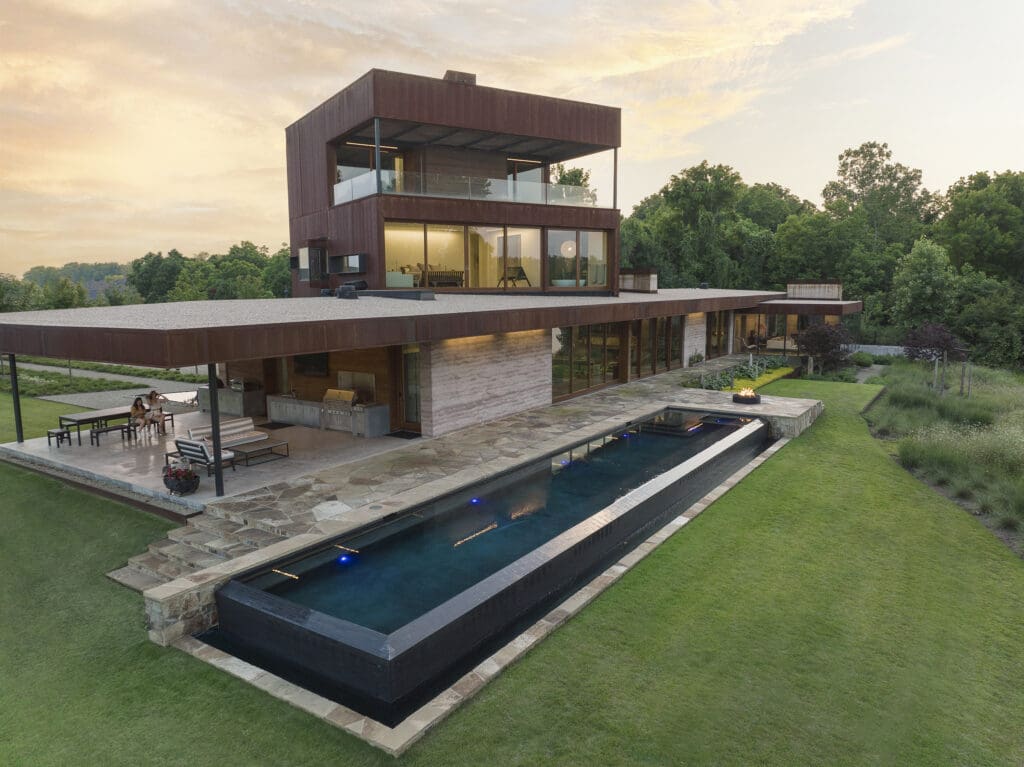
Another challenge was the installation of a fabricated steel fountain, which is situated in the front courtyard near two rows of honey locust trees. Space was tight, so the fountain had to be installed in sections and fabricated off-site. In addition, the fountain sat on a Corten steel house foundation and needed to be recoated several times until the team could locate a marine-grade product that would tolerate water runoff from the gravel and the house.
The homeowners were excited to have their dream landscape as the project came together.
“The client expressed appreciation for our team’s attention to detail, the professionalism through the process, and our commitment to a high quality to complement their home and exceed their expectations,” Cordell says. “They continue to depend on Landvisions and our team as a resource for managing the exterior through an extensive annual management program. It’s always rewarding when you can continue to nurture and develop a project like this over time.”
This article was published in the March/April issue of the magazine. To read more stories from The Edge magazine, click here to subscribe to the digital edition.


